

Solar energy has come a long way since the first modern panel was developed in 1954, with exponential growth and change since 2000. Solar scientists are working hard every day to bring more efficient, environmentally friendly technologies to homeowners and businesses around the world.
Since 2010, major advancements have been made, and we want to highlight some of the ones that gave us the push we needed to keep moving forward in clean energy, and we want to talk a little bit about the future of this world-changing technology.
Blue Raven Solar is leading the national solar movement and we cannot wait to see what the future holds for clean energy.
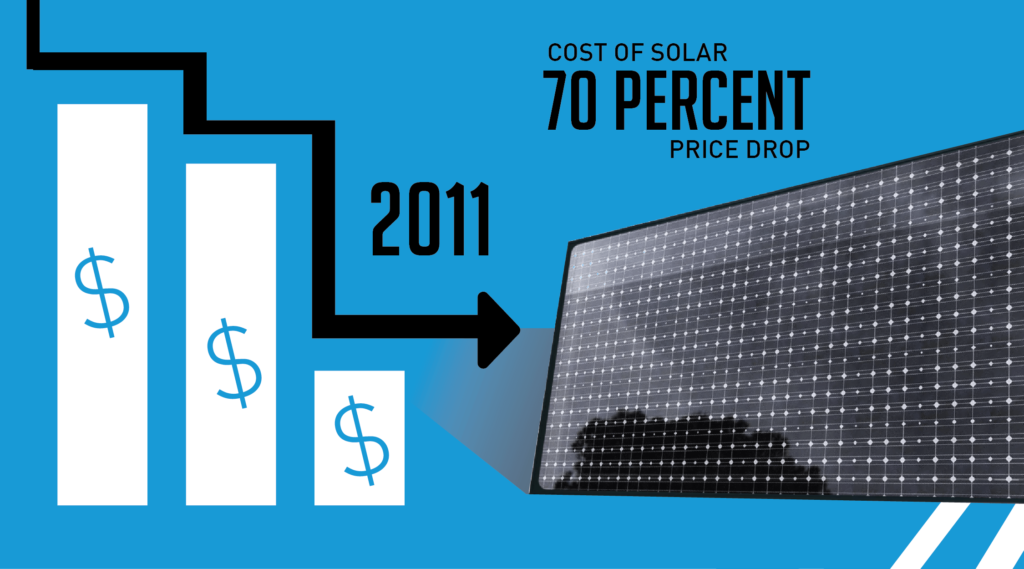
1. Historically Low Costs
One of the most notable achievements of solar in the 2010s was the historically low cost of solar technology. Throughout the decade, prices fell over 70%, making it a more accessible and cost-effective energy resource for not only homeowners, but for utility companies who harness renewable energy instead of burning more fossil fuels1 as well. This price decrease is continuing even today, and solar is now more accessible and affordable than ever.
In fact, it has helped boost solar generation by over 25 times, and Blue Raven Solar is proud to be continuing the momentum.
2. SunShot Initiative
In 2011, the SunShot Initiative was launched by the United States Department of Energy2. This was put in place to help reduce costs for solar to become more on par with the costs of nonrenewable resources like fossil fuels. The goals were to lower costs per kilowatt-hour by 2020 and be even lower by 2030. The utility-scale cost target was met three years early in 2017, and the initiative is still in progress to lower costs for residential and commercial solar technologies today.
With a few years to go before the 2030 deadline, we are right around the corner to achieving the lowest costs of all time for solar technology.
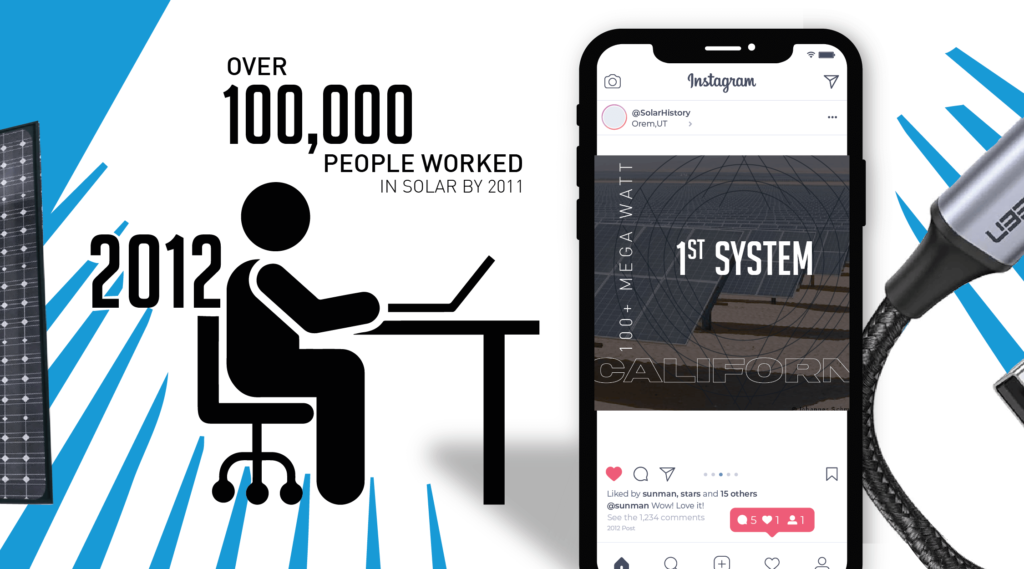
3. Rapid Employment Growth
The Solar Foundation’s National Solar Job Census in late 2011 found there were over 100,000 people in the United States employed in the solar industry3. Four years later, the same census found the number had doubled by 2015. This includes installers, sales representatives, manufacturers, and everyone in between.
Without each of these people helping bring solar to more homeowners, businesses, and utility companies, there would be no way for us to achieve the goals set by the nation, or state and city government for renewable energy capacity. We need the employment numbers to keep growing so we can reach the goals set for our future.
4. First 100+ MW Project
Kern County, California saw the first 100+ megawatt solar project in the United States in 2012, The Catalina Solar Project4. California is the top state in the country for solar capacity, and it’s no coincidence this 143 MW project was in the same state.
Large-scale projects like this one inspired more large-scale installations across the United States, and at the end of 2021, the country had over 120,000 megawatts installed throughout the states.
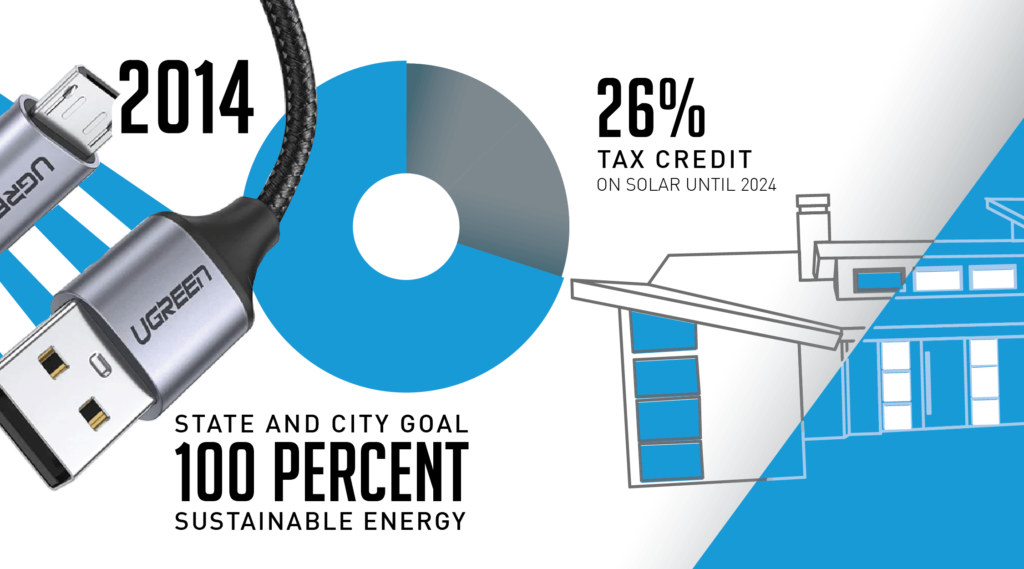
5. 100% Energy Efficiency
Several cities and states have set goals to become more energy efficient through residential, commercial, municipal, and utility power switching to renewable resources. Solar panel installation in Fayetteville, Atlanta, and many more cities is helping to meet these goals. Many of these goals are for a quarter or half of the energy to be sourced from renewable sources by 2030 or 2050, but in September of 2014, Burlington, Vermont became the first city in the nation to be fully powered by renewable energy5. Atlanta, Georgia and Georgetown, Texas have joined Burlington, and more are on their way to being run completely on clean energy6.
Blue Raven Solar is part of the effort to bring more cities closer to their goals, no matter how big or small, because each contribution and switch to clean energy brings cleaner air to the world and less reliance on nonrenewable resources.
6. Federal Investment Tax Credit (ITC) Changes
After its initial implementation in 2005, the Federal Investment Tax Credit (ITC) has been a big motivator for many homeowners to make the switch to solar energy.
In 2015, the credit was approved to be extended for five years, with a decrease and discontinuance in the 2020’s7. The ITC has been vital in the residential solar industry, and 2021 pushed the extension even further. While set to reduce in 2022 and discontinue in 2024, an extension and increase were granted for all purchases in 2022 – the tax credit increased to 30% and it was extended for the next 10 years.
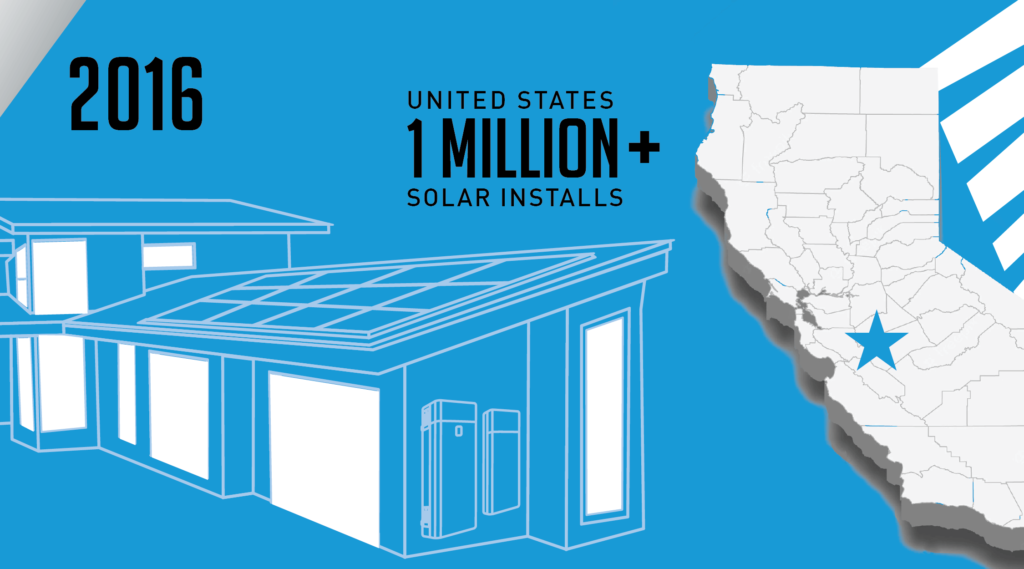
7. One Million Installations (and Then Some)
In May 2016, the United States installed its one millionth solar system8.
It took nearly 60 years to reach the first million, but in the following 3 years, the U.S. reached another million.
Solar is the fastest growing renewable energy resource in the world, and solar experts see the count doubling again to 4 million by the end of 2023. This exponential growth is an amazing accomplishment that will no doubt bring our planet cleaner air and bring our nation closer to achieving complete reliance on renewable resources.
8. Statewide Solar Regulations
Only two years after the first million installation goal was achieved in 2016, the California Energy Commission ruled all new residential buildings were required to have solar panels installed9 Once again, California shows us how they remain the top state for solar capacity. This not only increased the state’s reliance on clean energy, but it also created hundreds of new jobs, saved homeowners thousands of dollars on energy, and helped reduce some of the air pollution tending to plague big cities like Los Angeles.
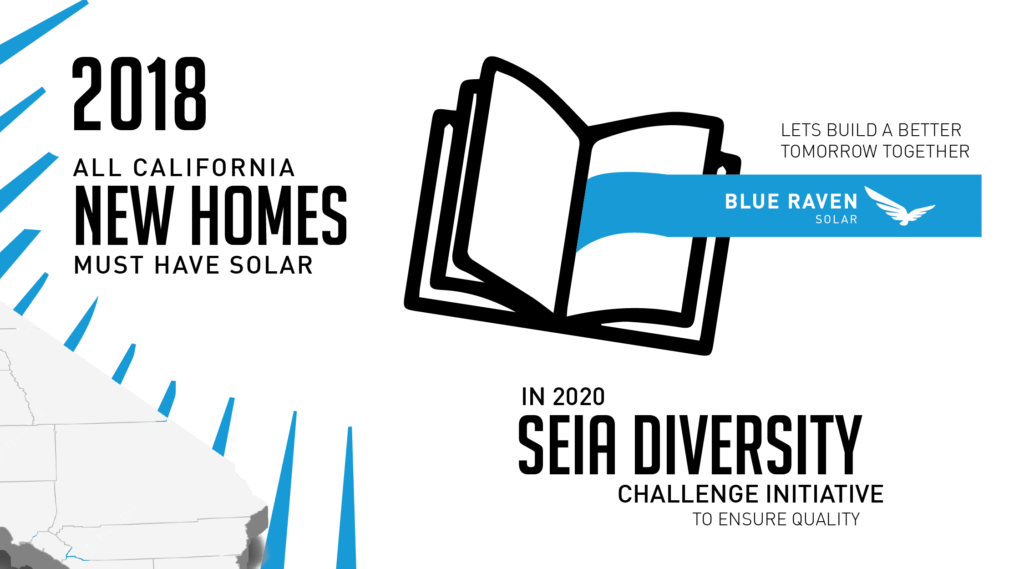
9. Solar Energy Industry Administration (SEIA) Diversity Challenge
In 2020, the Solar Energy Industry Administration, the national trade association for solar and solar+ industries10, launched the Diversity Challenge initiative11. This initiative is an important part of moving the solar industry forward, especially in a time where so many new jobs are being created every day.
The SEIA conducted a solar diversity study and released a best practice guide for making diversity more of an integral part of the industry, which goes right along with the Blue Raven Solar core value of “Respect and Empower one Another”. Through being a company valuing diversity, we are a strong example of success for the Diversity Challenge.
We are always looking to bring more people onto our team. If you want to be part of the solar movement and help make the earth a cleaner, greener place, join us today!
The Future
Since we’ve covered some milestones of the past, let’s keep moving forward into the future.
At Blue Raven Solar, we believe solar energy is the future of energy we can experience today.
Over the next decade, solar energy is projected to increase capacity by almost 70%, and residential solar is a large part of that growth12 – by 2030, it is estimated 13% of homes in the United States will be powered by solar energy13. This will decrease the nation’s reliance on nonrenewable energy resources and our reliance on imported energy.
The solar movement is growing fast, and we are proud to be leading the way for homeowners to make the switch.
Want to know what it feels like to be powered by the sun?
Request a free quote from our team of solar experts today!
Footnotes:
[1] https://www.nrel.gov/news/program/2021/documenting-a-decade-of-cost-declines-for-pv-systems.html
[2] https://www.energy.gov/eere/solar/sunshot-initiative
[3] https://www.seia.org/research-resources/national-solar-jobs-census-2020
[4] https://www.edf-re.com/project/catalina-solar/
[5] https://www.cdp.net/en/articles/cities/burlington-100-renewable-electricity-city
[6] https://www.c2es.org/content/city-action-on-clean-energy/
[8] https://www.seia.org/news/united-states-surpasses-2-million-solar-installations
[10] https://www.seia.org/about
[12] https://www.seia.org/us-solar-market-insight
[13] https://www.seia.org/research-resources/solar-data-cheat-sheet


Sorry, the comment form is closed at this time.